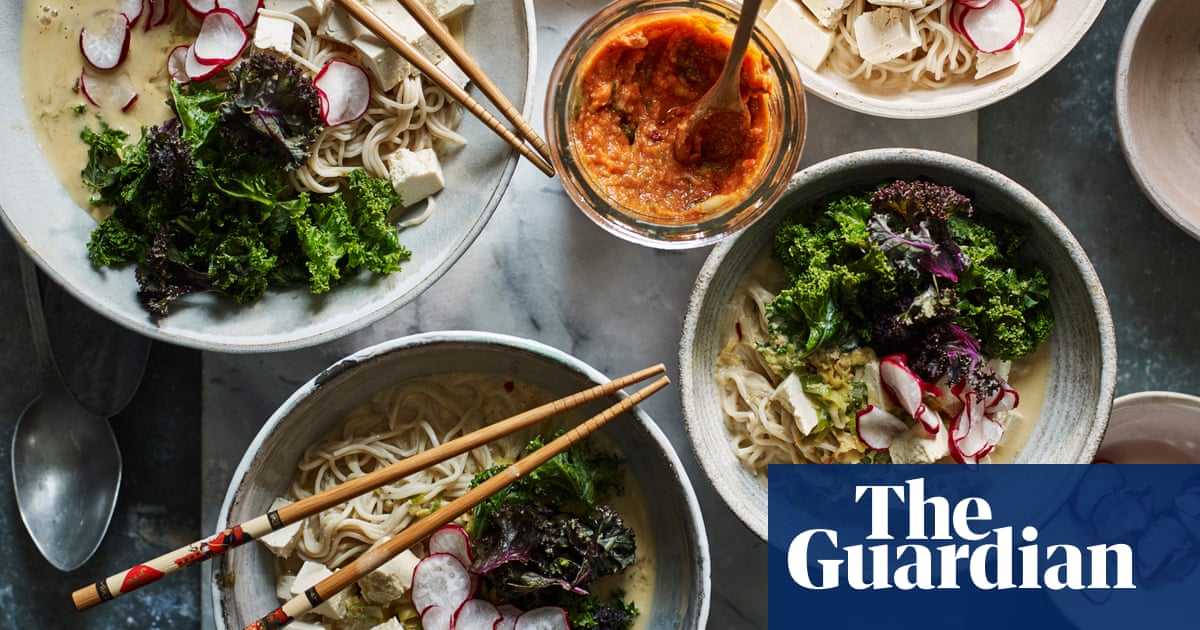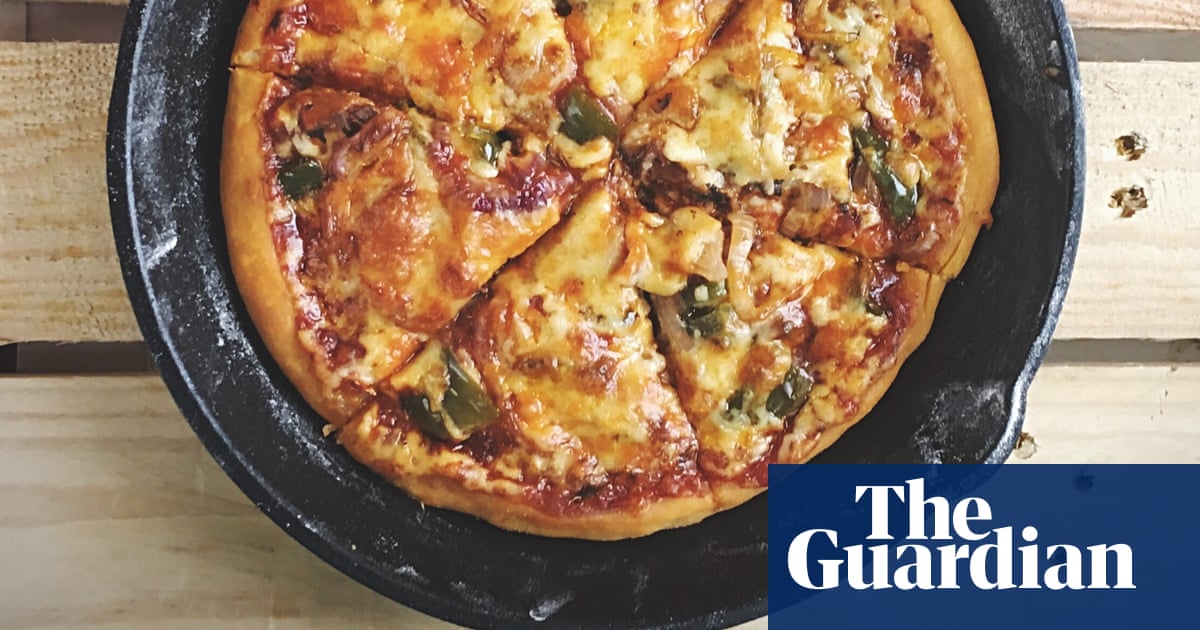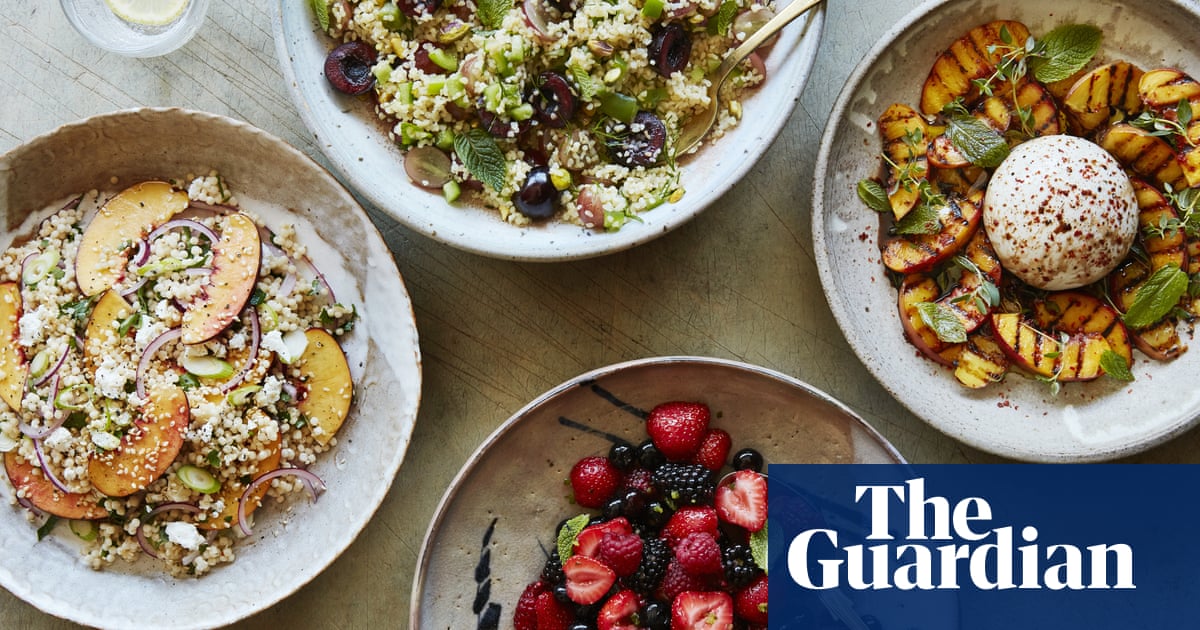
Can you make good ramen at home, and is it worth the effort?
Maria, Salford
Yes, and yes, according to Tim Anderson, author of Ramen Forever. “It’s straightforward to make a really good version at home, and you can surpass the quality of most ramen available in high-street restaurants and supermarkets,” he says, although he accepts it is something of a project. “A lot of this is hands-off time, though – leaving things to simmer, infuse, boil …”
What will make the difference between a so-so bowl of ramen and a great one is homemade noodles. “Good shop-bought noodles can be hard to find,” Anderson says. You’ll need kansui, AKA the alkaline salts sodium carbonate and potassium carbonate, which isn’t a matter of “being pedantic; it’s what gives ramen noodles their chewy, springy quality”, plus it’s easily available online. Then start with a 40% hydration dough. “You hear the word hydration used a lot in ramen noodle-making, but it’s just about how much water is used in relation to the flour,” Anderson explains. “Trust the dough, and if it’s too crumbly to work with, rest it in a plastic bag and that will help it to hydrate evenly and become workable.”
On to the rolling, which Ken Yamada, co-founder of ramen bar Tonkotsu in London, Birmingham and Brighton, does with a pasta machine: “Roll to the thickness of your choice, then cut into noodles using the thinnest setting.” If, however, you’re doing that by hand, Anderson would be tempted to bump up the hydration (water) to 45%: “That will help a lot.”
While ramen encompasses a wide range of flavours and styles, Anderson suggests starting with shoyu, a soy sauce base and clear broth for which the oven does much of the heavy lifting. He pops pork and chicken bones (ideally ribs and wings) plus water into a 120C (100C fan) oven: “That will hold at a barely simmering temperature overnight, leaving a flavourful, gelatinous broth.” Most broths also call for aromatic veg (onion, garlic, ginger), which, if you’re going with a low simmer, can be added at the start; otherwise, for a boil-on-the-hob job, chuck them in with an hour to go. Either way, once the broth is sieved, Anderson adds kombu (dehydrated kelp, from large supermarkets, healthfood and Japanese shops, or online) and seasons with a blend of soy sauces (light, medium and richer tamari). Yamada, meanwhile, starts his broth by roasting a chicken on a bed of ginger, spring onion, garlic and half an apple (yes, really), “until the skin starts to crisp”. He transfers the juices and veg to a pot, bubbles on low for two hours, then, like Anderson, adds kombu, soy and sea salt.
Kombu will also bring much-needed umami to meat-free broths (as will shiitake). “You’ll get body, but you’ll need a little cornflour or potato starch for slickness, and a fat, such as sesame oil, at the end,” Anderson says. Build on the flavour with roast veg (onion, carrot, cabbage), but don’t overcook them: “You can make a fresh, sweet broth in an hour.”
It’s then a question of toppings, for which Anderson urges restraint: “Ramen is really about the noodles and the broth, and how they interact.” That said, his bowl is never complete without chashu (thinly sliced braised pork) and sliced spring onions, with maybe something sharp such as pickled ginger and blanched bean sprouts for texture – and no one ever regrets a soft-boiled egg. But, as is so often the case, less really is more here.












